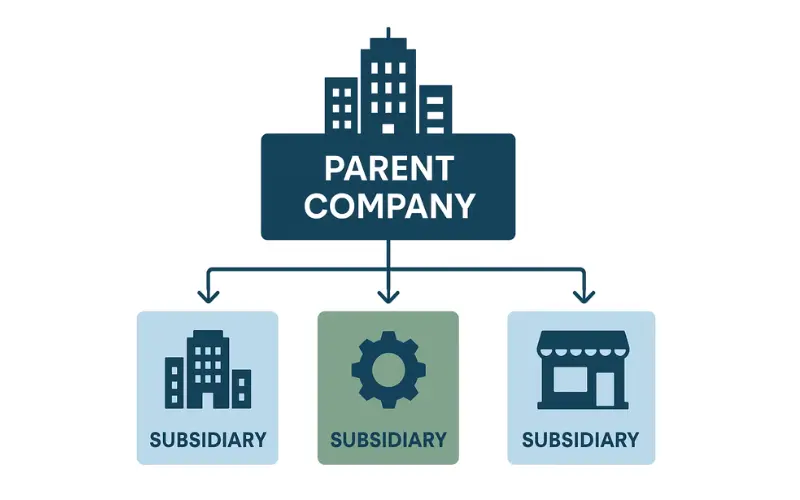Precisely controlling corporate spending lays the groundwork for long-term success and steady expansion. Even successful companies may see their profits slowly disappear if they don’t have a clear plan. Learning good spending control not only safeguards your financial flow but also creates more possibilities and smarter investments. Adopting intentional practices transforms money management into a great advantage instead of seeing spending as a required burden. Businesses that scale with strength rather than stumble with unneeded expenses are truly defined by clear visibility, thoughtful planning, and disciplined execution.
1: Establishing Clear Financial Structures
Setting Up Detailed Expense Categories
By grouping business expenditures into thorough and defined categories, financial tracking moves from a chaotic guesswork process into a strategic instrument. Every transaction has a clear home, so you run no chance of misplacing money or computing expenses. Categories should transcend basic classifications like “marketing” or “operations.” Separating them into targeted divisions like “social media advertising,” “employee training,” or “equipment leasing” helps one better understand expenditure patterns. When you regularly classify with accuracy, trends that direct wiser choices regarding which activities provide actual value, and which ones quietly deplete resources show themselves. Furthermore, easier tax preparation and more credible audit trails depend on clean, consistent categorization.
Utilizing Automation for Real-Time Tracking
Automation is no longer optional in the digital-driven terrain of today for major financial management. Using consistent cost monitoring systems guarantees real-time awareness of where every dollar goes. Platforms providing live dashboards, receipt scanning, and bank integration help to drastically save administrative strain by eliminating manual entering mistakes. Real-time tracking lets you find differences right away, thereby enabling you to fix problems before they become more serious. Using built-in analytics tools turns simple tracking into forward-looking financial intelligence. In sectors like music creation, for instance, monitoring daw codes correctly along with associated software purchases keeps licensing costs transparent and predictable.
2: Prioritizing Strategic Budgeting
Aligning Budgets with Business Goals
Budgets should never be considered in isolation from a company’s overall vision. Direct alignment of budgeting techniques with your strategic objectives guarantees that every expenditure promotes development rather than distracting from it. When budgets are created with clear intentions, they become tools for empowerment rather than limitations. If your main objective is to enter new markets, for example, the budget must show more allocations toward market research, local marketing campaigns, and sales staff building. Strategic budgeting also calls for a merciless assessment of legacy costs; what helped the company a year ago might now be a needless loss of profits.
Implementing Rolling Forecasts Instead of Static Budgets
In a fast-moving company, static annual budgets soon become useless. Using a rolling forecast strategy makes your financial planning flexible and dynamic rather than forcing you into antiquated presumptions. Based on the most recent data and market conditions, a rolling projection regularly changes your financial view—often quarterly or monthly. Without waiting for the following fiscal cycle, this technique enables you to reallocate money, handle growing problems, and seize fresh prospects. Rolling forecasts also inspire teams to remain involved with financial planning year-round, therefore promoting a culture in which responsibility and flexibility are the norms.
3: Building a Culture of Financial Responsibility
Educating Team Members About Cost Awareness
Unnecessary spending can be significantly decreased by fostering a corporate culture where everyone respects and understands the financial framework. Employees often lack awareness of the larger financial picture rather than purposefully overspend. This knowledge gap is closed by regular seminars, open information on corporate financial situations, and accessible rules for cost reporting. Team members who see clearly how their choices affect general profitability naturally become more prudent with resources. Financial literacy helps employees to develop ownership at all levels of the company, therefore transforming budget management from an isolated leadership responsibility into a team effort.
Setting Clear Approval Processes and Spending Limits
Unstructured expenditure approvals rapidly undermine financial discipline and allow waste. Setting clear approval systems and pre-defined spending limitations helps companies establish constraints that guard the budget without distorting production. Different spending thresholds—such as executive review for more significant expenses and automated approval for purchases under a specific amount—keep operations seamless yet under control. Clear procedures help staff members avoid unintentionally straying from policy guidelines, therefore lowering conflict and raising morale. Simple, well-defined procedures guarantee that every dollar spent has been examined for value and need, therefore strengthening the whole financial basis of the company.
Conclusion
Effective management of business expenses is a deciding factor between thriving and struggling businesses. It calls for creating intelligent buildings, matching expenditure to strategic objectives, and fostering a culture that celebrates every dollar—not only for cost control. When you incorporate accuracy, agility, and responsibility into financial management, expenses change from possible hazards into strong growth-oriented tools. Good management practices not only protect your bottom line but also improve your competitive edge, therefore enabling sustainable success that lasts through all stages of corporate development.




